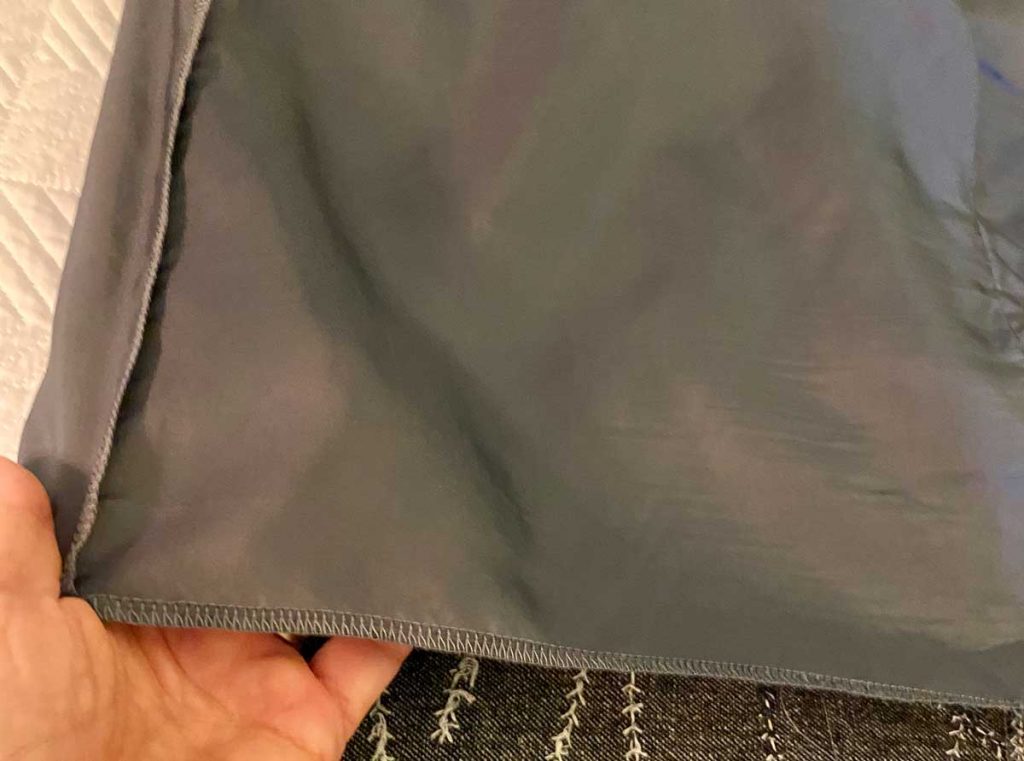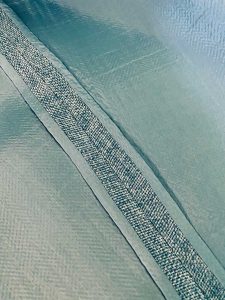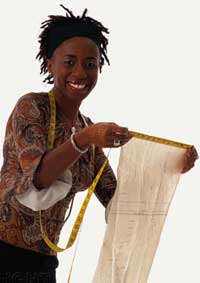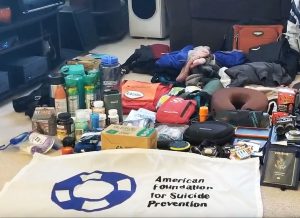I relate to life in music, TV shows, movies, and media in general. For the past few weeks, when I woke up, I felt as though my life was the movie Groundhog Day. Remember when Bill Murray relived his day over and over again and couldn’t get out of the loop? That’s the way I feel with this Coronavirus quarantine. I am reliving the same day — OK, different date — but the same bad dream EVERY DAY.
 Then, this morning I awoke with the old tv commercial from Dunkin’ Donuts bouncing through my thoughts. Do you remember the one where the baker rose every morning with the mantra, “Time to make the donuts. Time to make the donuts?”
Then, this morning I awoke with the old tv commercial from Dunkin’ Donuts bouncing through my thoughts. Do you remember the one where the baker rose every morning with the mantra, “Time to make the donuts. Time to make the donuts?”
My mantra is
“Time to make the masks.”
In the Groundhog Day movie, Bill Murray tried to vary his loop by doing different things and even improved himself along the way. It got me thinking, “How can I vary my mask making?” How can I remove the hum-drum from this mass production sewing project? What can I do to get creative?
Did I forget something?
 Another thought also crossed my mind. I have been so focused on making masks to donate to an organization with which I am affiliated, I hadn’t even made any for my family. So now I was on a mission. Masks for the grandkids, kids, hubby, in-laws and maybe even me.
Another thought also crossed my mind. I have been so focused on making masks to donate to an organization with which I am affiliated, I hadn’t even made any for my family. So now I was on a mission. Masks for the grandkids, kids, hubby, in-laws and maybe even me.
Hubby had already made it very clear that he was far too careful (substitute macho here) for the virus to get him. The teenage granddaughter thought it just wasn’t cool (my word, not hers). And the four year old grandson—a mask wouldn’t make it to his face unless it had an aspect of play involved. Sew, what’s a “sew’r” to do? Customize, of course!
Fabric Stash to the Rescue
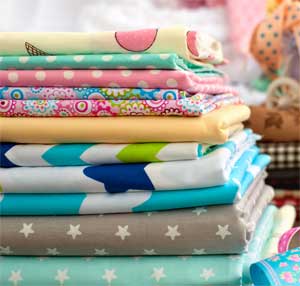
I pulled out my fabrics and matched fabric to people.
- My youngest grandson at 4 is crazy about dinosaurs and I just happened to have a scrap of dinosaur fabric that was large enough to make the face part of the mask. One down!
- Middle grandchild is 9, loves Mickey Mouse and the color red. My stash proved useful again with the themed fabric.
- What about that 16 year old? I had made her pajama pants for Christmas, so there were still some scraps of Dr. Who fabric left. It might not be cool to wear a mask, but Dr. Who anything was definitely cool. Since her dad was also a fan of the Doctor, they soon had matching masks.
- Mom loves Tigger from Winnie the Pooh and I know there must be some Tigger fabric somewhere (I’m still searching). If that doesn’t turn up, my other son just had me make him pillows with the Marauders’ Map fabric from the Harry Potter movies. Those leftovers would be good for the both of them.
- I can’t forget my sister-in-law. She loves chocolate. What would be better than Hershey’s Miniatures fabric?
- Finally, what about hubby? He teaches chemistry, but I know I just don’t have anything in the way of test tubes or chemical symbols. What to do, what to do? Just as I was about to give up, I found some fabric with eagles on it. Both our sons are eagle scouts and he works with the scouts on advancement of the eagle candidates. Sounds like another match.
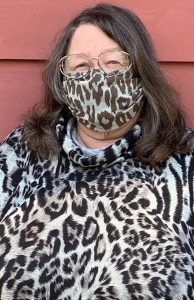 I spent the rest of my day “playing” with my fabric stash. It was fun — really fun remembering all the things I had made with the original purchases and it brought variety to what had been a boring mass production effort. And the results were very special, very unique masks that matched everyone’s personalities. With fashion statements like these, perhaps masks will be viewed as a fashion accessory instead of a health necessity. Can you see it now, designer masks that everyone will soon be wearing? Or perhaps the next challenge in your chapter fashion show? Maybe it will even be the first challenge on next season’s Project Runway.
I spent the rest of my day “playing” with my fabric stash. It was fun — really fun remembering all the things I had made with the original purchases and it brought variety to what had been a boring mass production effort. And the results were very special, very unique masks that matched everyone’s personalities. With fashion statements like these, perhaps masks will be viewed as a fashion accessory instead of a health necessity. Can you see it now, designer masks that everyone will soon be wearing? Or perhaps the next challenge in your chapter fashion show? Maybe it will even be the first challenge on next season’s Project Runway.
Oh, and for me, if this virus situation continues, I will soon have a mask to match every outfit!
Stay safe, stay healthy and keep on sewing!
~Rosemary Fajgier





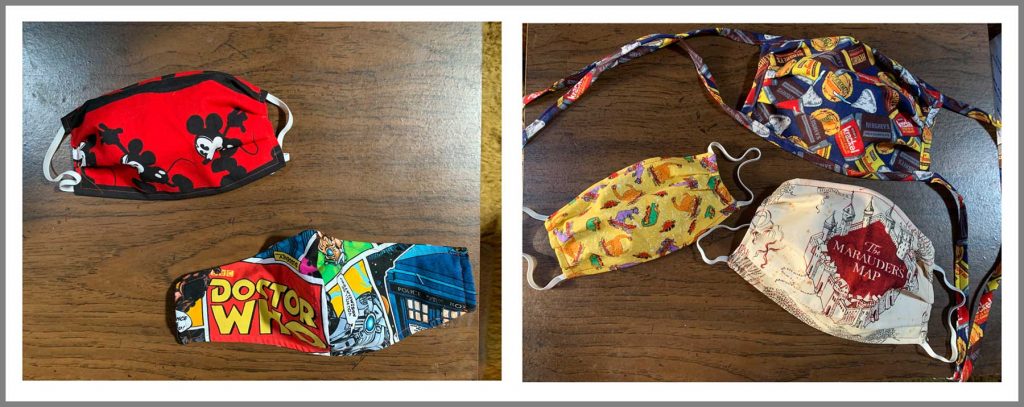
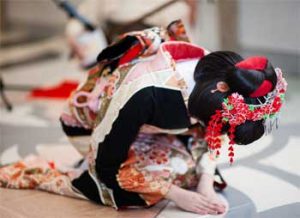
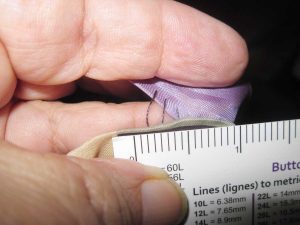
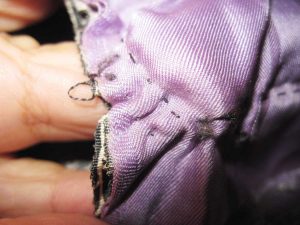
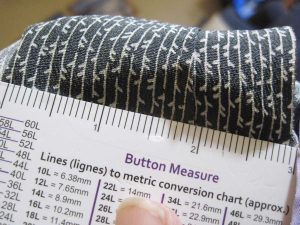
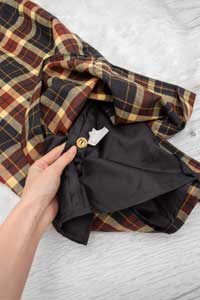 So here you are, making a pencil skirt with that precious fabric you brought home from your recent trip. It’s luscious and precious and you want to construct it with care. You have some specific objectives and need to plan what are you going to do to make it:
So here you are, making a pencil skirt with that precious fabric you brought home from your recent trip. It’s luscious and precious and you want to construct it with care. You have some specific objectives and need to plan what are you going to do to make it: